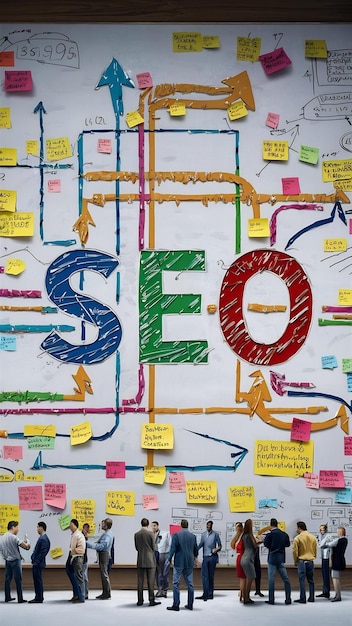Why Use Digital PR For Link Building in 2025
As the digital landscape continues to evolve, savvy marketers are constantly reassessing their strategies to keep pace with changing algorithms and user behavior. Following Google’s recent updates, including the Helpful Content updates, email anti-spam requirements, and the growing prominence of AI, the importance of adopting innovative link-building techniques has never been more critical.
While digital PR is not a new concept, it has consistently proven to be one of the most effective ways to acquire high-quality backlinks that Google values. By leveraging digital PR, businesses can protect themselves from algorithm penalties while simultaneously raising brand awareness and improving search rankings—benefits that traditional link-building tactics often fail to deliver.
This article will delve into why digital PR should be a cornerstone of your link-building strategy and provide actionable insights on launching your first digital PR campaigns.
Understanding Digital PR
Digital PR is a strategy designed to earn high-authority links from reputable publications, driving both Search Engine Optimization (SEO) and site traffic. While one can engage in digital PR without creating content—such as by pitching expert commentary to journalists—the most common approach involves crafting compelling content and then pitching it to the media. Examples can range from data-driven studies to informative infographics.
When journalists write about your content, they typically include backlinks to your website. These high-authority links significantly bolster your site’s authority, enhance brand visibility, and increase organic traffic.
Traditional Link Building Versus Digital PR
Before diving deeper, it’s essential to distinguish between traditional link-building methods and digital PR. Traditional link-building tactics have been around for years—guest posting, link exchanges, and resource page link building are just a few examples. In contrast, digital PR may feel like a newer approach depending on where you’re located globally.
Comparative Link-Building Strategies
- Traditional Link Building:
- Guest Posting
- Link Exchanges
- Resource Pages
- Digital PR:
- Data-driven Content Marketing
- Expert Quotations and Commentary
- Media Outreach
Even unlinked mentions can be found in both categories; however, they are more prevalent in digital PR.
Challenges with Traditional Link Building
It is inaccurate to claim that traditional link-building tactics are ineffective—there are still valuable strategies among them. Nonetheless, these tactics are not as efficient or scalable as they once were for acquiring high-quality links that positively affect your rankings.
Here’s why:
- Decreased Reception: Many traditional tactics, such as link insertions and broken link building, are encountering diminishing returns as audiences become more discerning. Tools like Ahrefs and Screaming Frog enable SEOs to quickly identify broken links, reducing the need for pitches to replace them.
- Monetization Knowledge: As website owners grow more savvy about monetization, the marketplace for links has transformed. Although not every traditional link-building method requires spending, most do involve some financial investment. Google’s stringent policies against paid links make this risky.
- A Link Market Environment: Platforms like Reddit and various link-building groups have emerged as marketplaces where individuals offer “guest post sites” or backlinks from supposed “high-authority” blogs. Many of these links are either paid placements or necessitate link exchanges.
The Evolution of Guest Blogging
Guest blogging has notably changed from a means to establish oneself as a thought leader in a niche to a strategy where entire databases are dedicated to offering guest posting opportunities. Research showed that a database might contain over 41,000 sites that accept guest posts.
Data indicates that the average cost for guest posts is around $220, while link insertions can reach $141. Such expenses do not guarantee quality, raising concerns about the effectiveness of traditional approaches.
Shifting Views on Link Quality
Google has consistently emphasized the value of quality over quantity when it comes to backlinks. In a 2021 interview, Google’s John Mueller stated that rather than focusing on the total number of links, it’s vital to evaluate the context and relevance of those links.
Google representatives further indicated in April 2024 that fewer, high-quality links might be all a site needs to rank well. The conversation shifted as industry experts noted how Google is increasingly adept at detecting link spam, employing tools like the AI-powered SpamBrain to uncover both those buying links and sites passing out outgoing links.
The Future of Link Building in 2025
So, how will link building evolve in 2025? The answer lies in mastering digital PR. As SEO professionals adapt, the most successful strategies will prioritize genuine, high-quality backlinks over sheer volume. Businesses that remain committed to producing valuable content and building authentic relationships with media outlets will thrive.
For marketers looking to step up their link-building game, focusing on digital PR offers a promising route to achieving visibility, enhancing brand trust, and achieving long-term SEO success. In 2025, the link-building landscape will continue to favor those who innovate and adapt.
Conclusion
Embracing digital PR for link building is not merely a trend; it’s a necessary evolution in a world where algorithms are constantly changing. By shifting your focus from traditional methods to a more dynamic and effective strategy, you can not only achieve better search rankings but also enhance your brand’s reputation and reach in the digital marketplace.
